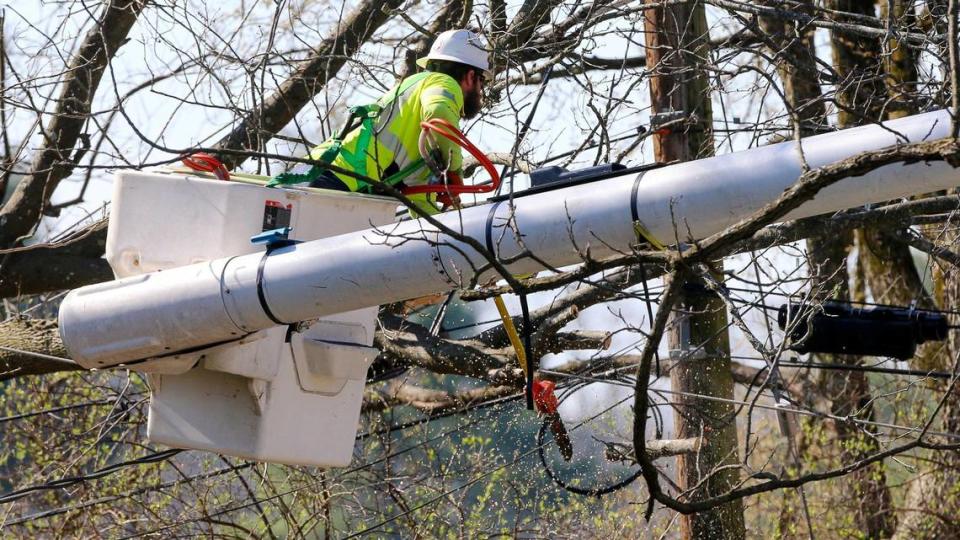March wind storms exposed problems in Lexington. Here’s what needs to be fixed, report says
Lexington should update some technology and software and do a better job communicating internally and with the public during emergency weather events, according to a report released Tuesday.
“Every one of these incidents is a learning opportunity for us,” said Public Safety Commissioner Ken Armstrong during a Tuesday Lexington-Fayette Urban County Council Social Service and Public Safety Committee meeting.
The Friday, March 3 wind storm knocked out power to north of 45,000 Fayette County residents, damaged city and private property and killed one Fayette County resident.
Some Lexington homeowners were without power for five days.
The council asked the city to do an after-action report after receiving complaints from residents and city employees about the city’s storm response.
The city sent home non-essential city employees on Friday, March 3 at noon. City emergency operations personnel managed the storm response remotely Friday evening. The city activated the emergency operations center on Saturday and staff began coordinating city emergency response in-person.
That was a mistake.
The city should have activated its emergency operations center Friday, Armstrong said. “It may give us a better line of communications,” he said.
“We had communications issues, especially with KU,” Armstrong said. “When the storm hit, my phone did not work correctly. Landlines were down.”
E911 had a power surge that knocked out communications during the storm. The call center was able to return phone calls on landlines. The city is looking for a grant to help upgrade that E911 system, Armstrong said.
Computer-aided dispatch, which dispatches police and fire, also struggled to keep up. Armstrong said the city is looking at upgrades to that system as well. Some of the problems with dispatch was due to additional police and fire vehicles on the road, he said.
That system has had issues over the past month.
Police have inverters, which can be used to power traffic lights, in their vehicles.
Armstrong said the city likely needs more inverters because so many lights were out that weekend, he said.
The city also needs more battery-powered chainsaws.
No shelters? What about medical devices?
No shelters were open during the event.
The Red Cross does not open shelters unless a home is destroyed. Some residents complained there was no place for medically fragile people whose homes had no power to charge medical devices such as oxygen tanks.
St. Michael the Archangel Episcopal Church on Bellefonte Avenue in Lansdowne was one of the few churches to open its doors to the public.
According to documents provided to the council, the city is pursuing grants for medical charging devices.
“I don’t want to say that issue is fixed but we are headed in the right direction,” Armstrong said of the grants.
Social Service Commissioner Kacy Allen-Bryant said the city considered opening at least one shelter. But opening shelters takes staff and that’s not something the city typically does.
Bryant said when the city has opened up shelters during storms in the past, no one came.
Better communication
Some on council said the top complaint from residents was lack of consistent communication.
“I felt that it was a little tough to navigate for some of our constituents,” said Councilwoman Kathy Plomin. Many weren’t sure where to go for news of when and how the power will return.
Armstrong said the city is working with KU to figure out how to better coordinate and improve communication, he said.
“We have re-iterated to them the importance of having a body in our office,” Armstrong said of having a KU rep in emergency operations. That may be difficult when there is widespread power outages like on March 3, he said. That storm wiped out power to much of Kentucky.
Councilwoman Whitney Elliott Baxter urged the city to develop a consolidated communication plan during storms.
“Most of the frustration came from people not knowing what was happening,” Baxter said.



